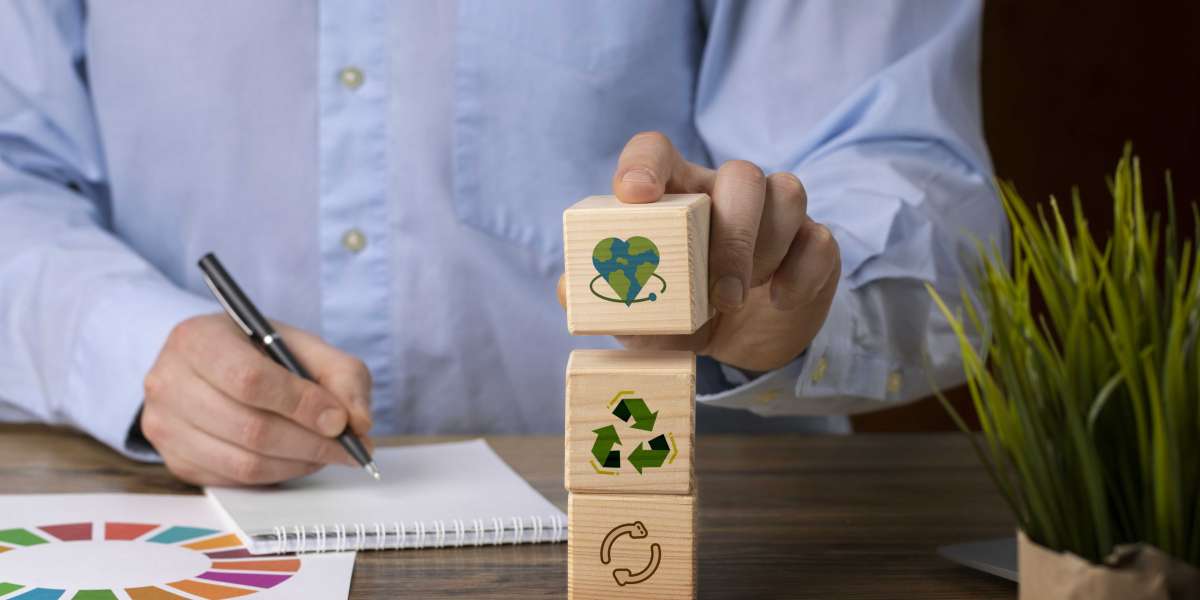When we think about sustainability, we often think big—solar panels, electric cars, composting setups. While those are great steps, what if I told you that sustainability could start somewhere much closer… like your bedroom, bathroom, or even your closet?
The truth is, our homes are ecosystems. The choices we make in every room—what we clean with, how we power our lights, where we store food—have a direct impact on the environment. And the best part? Making a home more eco-conscious doesn’t have to be complicated, expensive, or perfect. It’s about small, thoughtful upgrades that make your space cleaner, greener, and better for both the planet and your peace of mind.
If you’ve ever visited one of the many environmentally friendly events held globally, you’ve probably seen that sustainability isn’t just a movement—it’s a mindset. And it can be beautifully woven into every corner of your home.
Let’s walk through your home, one room at a time, and explore practical ways to embrace greener living.
The Kitchen: Where Most Waste Begins
The kitchen is one of the most waste-heavy areas of the home, but also the easiest place to make impactful changes.
1) Rethink Storage: Swap single-use plastic wrap and foil for beeswax wraps, glass containers, and silicone lids. These durable alternatives last longer, reduce waste, and keep food fresher.
2) Buy in Bulk (and Smartly): Buying grains, spices, and snacks in bulk reduces packaging waste. Bring your own containers to refill stores or local markets.
3) Compost Your Scraps: If you're throwing food waste into the garbage, you’re contributing to methane buildup in landfills. Even if you live in an apartment, countertop compost bins or bokashi systems make it easy to reduce this impact.
4) Ditch Harsh Cleaners: Switch to natural or DIY cleaners with ingredients like vinegar, lemon, and baking soda. Brands showcased at environmentally friendly events often promote biodegradable, non-toxic alternatives that work just as well—without polluting waterways.
The Living Room: Comfort Without Compromise
Your living space is where you relax, entertain, and spend a lot of time—so it should be healthy, safe, and environmentally sound.
1) Choose Sustainable Furniture: Furniture made from reclaimed wood or recycled materials can be just as stylish—and lasts just as long—as mass-produced pieces. Avoid products with VOC-heavy finishes, which pollute your indoor air.
2) Go Plant-Powered: Add houseplants not just for aesthetics but for air purification. Spider plants, snake plants, and pothos are all low-maintenance and improve indoor air quality.
3) Minimize Electronics Drain: Unplug devices when they’re not in use or invest in a smart power strip. Even in standby mode, electronics suck up “phantom” energy. Also, switch to LED bulbs—they use 80% less energy and last 25 times longer than traditional bulbs.
The Bedroom: Sleep Sustainably
Your bedroom is your sanctuary, but it can also be a silent contributor to your environmental impact.
1) Eco-Friendly Bedding: Organic cotton, hemp, and bamboo sheets are breathable, soft, and free from harmful pesticides. Brands featured in environmentally friendly events often showcase textiles that are ethically produced and packaged plastic-free.
2) Mindful Mattresses: Most conventional mattresses are made with petroleum-based foams and treated with flame retardants. Look for mattresses made from natural latex, organic wool, or coconut fiber instead.
3) Declutter with Purpose: When downsizing your wardrobe or decor, don’t just toss it all. Donate, sell, or upcycle items. Old T-shirts can become cleaning cloths, while unused blankets can go to shelters.
The Bathroom: Small Room, Big Changes
Though compact, the bathroom sees a lot of action—and waste.
1) Ditch Single-Use Plastics: Switch to shampoo bars, conditioner bars, and toothpaste tablets. These not only last longer but also eliminate plastic packaging.
2) Reusable Essentials: Swap disposable cotton pads for washable versions, and invest in a safety razor to avoid endless plastic cartridges.
3) Water Wisdom: Install low-flow showerheads and faucet aerators. These save thousands of liters per year without sacrificing pressure. And yes, turning off the tap while brushing still matters.
The Laundry Area: Clean Clothes, Clean Conscience
Your laundry room might be invisible on your sustainability radar, but it’s a key area to focus on.
1) Wash Cold, Air Dry: Most of your washing machine’s energy use goes toward heating water. Washing on cold not only saves energy but is gentler on your clothes. Air-drying (even partially) reduces electricity use and extends fabric life.
2) Eco-Friendly Detergents: Many detergents are filled with synthetic chemicals that harm aquatic life. Opt for plant-based detergents, laundry sheets, or refillable liquid solutions.
3) Avoid Microfiber Pollution: ynthetic clothes shed microplastics in the wash. Use a microfiber-catching laundry bag or ball to trap these invisible pollutants before they reach the ocean.
The Home Office: Greener Workspaces
With more people working from home, the sustainability of your office matters more than ever.
1) Paperless, Please: Go digital whenever possible. Use cloud storage, e-signatures, and online billing to reduce unnecessary printing.
2) Energy-Efficient Tech: Choose Energy Star-rated monitors, laptops, and printers. These are designed to consume less power while running.
3) Green Light, Good Mood: Use LED desk lamps and position your workspace near natural light to reduce energy use and boost your mood.
The Garage or Storage Areas: Don’t Let Junk Pile Up
These “forgotten” areas often accumulate the most waste—old paint cans, broken appliances, and boxes of who-knows-what.
1) Safe Disposal: Never throw electronics, batteries, or paints in the regular trash. Take them to recycling centers or collection drives promoted by environmentally friendly events in your area.
2) Organize with Purpose: Instead of buying plastic bins, repurpose boxes, glass jars, or old containers for storage. Minimalism isn’t about having nothing—it’s about keeping only what truly serves a purpose.
Final Thoughts: Every Room Has a Role
Turning your home into a more sustainable space doesn’t have to mean turning it upside down. It starts with awareness, then grows through small, thoughtful changes.
When you tackle it room by room, it becomes manageable—even fun. Each space offers a chance to align your daily life with your values. Whether you're upgrading a lightbulb, choosing a refillable soap, or attending environmentally friendly events to learn more, your home becomes a place that supports the planet and your wellbeing.
Sustainability isn’t just about the world out there. It’s about the world you create inside your own walls. And step by step, it’s absolutely doable.
FAQs
Q: What room should I start with?
Start with the kitchen or bathroom—these usually have the most visible waste and the easiest swaps.
Q: Is it expensive to make your home sustainable?
Not necessarily. In fact, many eco-friendly changes—like air drying clothes or using less water—can save you money long-term.
Q: How do I get family members on board?
Lead by example. Show how easy and beneficial it is. Involve kids in upcycling projects or sustainable grocery shopping.
Q: Are all eco-labeled products really sustainable?
Not always. Look for third-party certifications and explore options introduced at environmentally friendly events where brands are vetted and innovation is prioritized.
Q: I live in a rental—what can I do?
Plenty! Focus on habits—like waste reduction, energy savings, and low-impact products—that don’t require structural changes.


